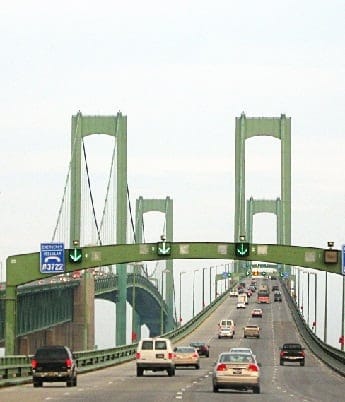Introduction - Delaware
Delaware is a small northeastern costal state bordered by the states of Pennsylvania, Maryland, New Jersey and the Atlantic Ocean to the east. It is named after Lord De La Warr who sailed to Jamestown Virginia from England in 1610 and would become the governor of Virginia. What makes this state so unique is that it was the very first state to ratify the U.S. Constitution. Just when did it become a state? Where is the capital? Why is Oliver Evans such an important name in Delaware's history? Read the interesting facts and information below, which is listed in a kid-friendly format, to find out the answers to these questions and much more.Click here for a great selection of Amazon.com books about Delaware.
State of Delaware Quick Facts
- Delaware was the very first state to join the union.
- Delaware officially became a state on December 7, 1787.
- Delaware is one of the smallest states in total land area. It is just 1,955 square miles (5,060 square kilometers) and is only larger than Rhode Island.
- The state capital of this state is Dover.
- The population of Delaware is 925,749 (source 2013 United States Census Bureau estimate).
- Although Delaware ranks as the 6th least populous state in the U.S. (source 2013 United States Census Bureau estimate), it is also the 6th most densely populated of all the states.
- The state flower is the Peach Blossom.
- The nicknames of this state include The First State, The Diamond State, The Blue Hen State and The Small Wonder.
- Wilmington is the most populous city in Delaware.
- The name for Delaware residents is Delawareans.
- There are no major lakes in Delaware but there are some major rivers including the Delaware River, Nanticoke River, and the Mispillion River.
- The state song is "Our Delaware".
Interesting Delaware Facts
- The state of Delaware is named after the Delaware River and Bay. The name of the river and bay was derived from the name of the first governor of the Colony of Virginia, Thomas West, Lord De La Warr.
- Delaware Bay lies between the east coast of Delaware and New Jersey. This bay's total area is approximately 782 square miles.
- Although Delaware is rich in history, it is the only state without a dedicated National Park and has just 13 national historical landmarks.
- The Delaware Indians, also known as the Lenape, were a relatively advanced and well-respected society that first came into contact with Europeans in 1524.
- In 1631, eleven years after the Pilgrims landed in Plymouth, the first European settlement in Delaware, named Zwaanendael (swan valley), was established.
- Costal Delaware was seen as a potential target for German U-boat invasions during WWII, so twelve observation towers were built to protect the area.
- The Delaware Breakwater, built in 1828 to protect the costal area around Lewes Delaware, is now listed on the National List of Historic Places. This barrier, built to protect the coast from strong waves, was the first of its kind to be built in the Western Hemisphere.
Delaware Historical Facts
- During the American Revolutionary War almost 4,000 men from the small state of Delaware enlisted for the war.
- Only one American Revolutionary War battle was fought in Delaware which was the Battle of Cooch's Bride in 1777.
- Oliver Evans, a Delaware native, helped the state recover economically after the Revolutionary War. His invention of the automatic flour-milling machine made Delaware the center of the country's flouring industry.
- Delaware is one of four U.S. states to have been marked with miles of stones to form the Mason-Dixon Line. This was a boundary created by Charles Mason and Jeremiah Dixon between 1763 and 1767 as a means of resolving a border dispute. Many of the stones still remain today and serve as a symbolic boundary between the north and south states.
